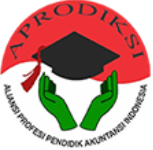Development of E-Module of Teacher Professional Ethics Based on Team-Based Project with Onenote Office 365
(1) Universitas Negeri Semarang
(2) Universitas Negeri Semarang
(3) Universitas Negeri Semarang
(4) Universitas Negeri Semarang
Abstract
This research revealed the effectiveness of e-module based on team-based project on teacher profession ethics in supporting online learning. This research was a development research with ADDIE. The e-module of Teacher Professional Ethics was developed based on OneNote application. The feasibility level obtained by the media from the average material validation result was 3.00 with a good category and the results of validation media obtained an average of 3.44 with a very good category. E-module learning media trials for students gained an average eligibility of 3.30 with a good category. Thus, it can be concluded that the learning media e-module of teacher professional ethics with Onenote Office365 in the Administrative Education study program can be used to improve knowledge and alternative online learning during the Covid-19 pandemic.
Keywords
Full Text:
PDFReferences
Bodle, R. (2011). Social Learning with Social Media: Expanding and Extending the Communication Studies Classroom. Cutting-Edge Technologies in Higher Education, 107–126. doi:10.1108/s2044-9968(2011)0000003009
Burrus, D. and Mann, J.D. (2011), Flash Foresight: How to See the Invisible and Do the Impossible, Harper Collins Publishers, New York, NY
Christensen, C. and Eyring, H. (2011), The Innovative University: Changing the DNA of Higher Education from the Inside Out, Jossey-Bass, San Francisco, CA.
Conway, M. (2011). Exploring the implications, challenges and potential of new media and learning. On the Horizon, 19(4), 245-252. doi:10.1108/10748121111179367
Daryanto. (2011). Media Pembelajaran. PT SaranaTutorial Nurani Sejahtera.
Dick, W., & Carey, L. (1996). The systematic design of instruction. 4th ed. New York, NY: Harper Collin Gustafson, K. and Branch, R. (1997) Revisioning Models of Instructional Development. Educational Technology, Research and Development, 45 (3), 73-89.
Dunlap, J. C., & Lowenthal, P. R. (2009). Tweeting the night away: Using Twitter to enhance social presence. Journal of Information Systems Education, 20(2). Available at http:// jise.org/Issues/20/V20N2P129-abs.pdf
Hagel, J. III and Seely Brown, J. (2010), Three Ways to Distinguish an Edge from a Fringe, HBR Blog Network, available at:http://blogs.hbr.org/bigshift/2010/03/three-ways-to-distinguish-an-e.html (accessed 25 June 2021).
Hamdani. (2011). Strategi Belajar Mengajar. Pustaka Setia.
Hsieh, P. A. J., & Cho, V. (2011). Comparing e-Learning tools’ success: The case of instructor-student interactive vs. self-paced tools. Computers and Education, 57(3), 2025–2038. https://doi.org/10.1016/j.compedu.2011.05.002
Ito, M., Baumer, S., Bittanti, M., boyd, d., Cody, R., Herr-Stephenson, B., Horst, H., et al. (2010). Hanging out, messing around and geeking out: Kids living and learning with new media. Cambridge, MA: MIT Press.
Jones, S., & Fox, S. (2009). Generations online in 2009. Pew Internet and American Life Project. Available at http://www.pewinternet.org/Reports/2009/GenerationsOnline-in-2009.aspx
Kamenetz, A. (2010), DIY U: Edupunks, Edupreneurs, and the Coming Transformation of Higher Education, Chelsea Green Publishing, White River Junction, VT
Marpanaji, E., Mahali, M. I., & Putra, R. A. S. (2018). Survey on How to Select and Develop Learning Media Conducted by Teacher Professional Education Participants. Journal of Physics: Conference Series, 1140(1). https://doi.org/10.1088/1742-6596/1140/1/012014
Menkhoff, T., Tze Yian, T., Yue Wah, C. and Yue Kee, W. (2011), "Engaging knowledge management learners through web‐based ICT: an empirical study", VINE, Vol. 41 No. 2, pp. 132-151. https://doi.org/10.1108/03055721111134781
Miller, P. (2001). Learning styles: The multimedia of the mind. Educational Resources Information Center ED, 451, 140
Neo, T. K., & Neo, M. (2004). Classroom innovation: Engaging students in interactive multimedia learning. Campus Wide Information Systems, 21(3), 118–124. Available at http://www.emeraldinsight.com/10.1108/10650740410544018
Pakpahan, R., & Fitriani, Y. (2020). JISAMAR (Journal of Information System, Applied, Management, Accounting and Researh). 4(2), 30–36.
Rainie, L. (2010). How social users of social media have changed the ecology of information, February. Paper presented at the biennial meeting of the VALA Libraries, Melbourne, Australia. Available at http://bit.ly/alKWdm
Scharmer, O. (2009), Theory U, Berrett-Koehler Publishers, San Francisco, CA
Seitz, A. R., & Shams, L. (2008). Benefits of multisensory learning. Trends in Cognitive Science, 12(11), 411–417. Available at http://bit.ly/9Ppvh5
Siemens, G., & Tittenberger, P. (2009). Handbook of emerging technologies for learning (Available at http://techcommittee.wikis.msad52.org/file/view/HETL.pdf). Manitoba: University of Manitoba.
Sugihartini, N., & Jayanta, N. L. (2017). Pengembangan E-Modul Mata Kuliah Strategi Pembelajaran. Jurnal Pendidikan Teknologi Dan Kejuruan, 14(2), 221–230. https://doi.org/10.23887/jptk-undiksha.v14i2.11830
Tapscott, D. and Williams, A.D. (2010), ‘‘Innovating the 21st Century: It’s Time!’’, Educause Review, Vol. 45 No. 1, available at: www.educause.edu/EDUCAUSE þ Review/EDUCAUSEReviewMagazine Volume45/Innovatingthe21stCenturyUniver/195370 (accessed 25 June 2021)
Tierney, W. G., & Hentschke, G. C. (2007). New players, different game: Understanding the rise of for-profit colleges and universities. Baltimore: The Johns Hopkins University Press.
Wellman, B., Quan-Haase, A., Boase, J., Chen, W., Hampton, K., Diaz, I., & Miyata, K. (2003). The social affordances of the Internet for networked individualism. Journal of Computer-Mediated Communication, 8(3). Available at http://jcmc.indiana.edu/vol8/ issue3/wellman.html
Refbacks
- There are currently no refbacks.

This work is licensed under a Creative Commons Attribution 4.0 International License.

.png)

.png)





